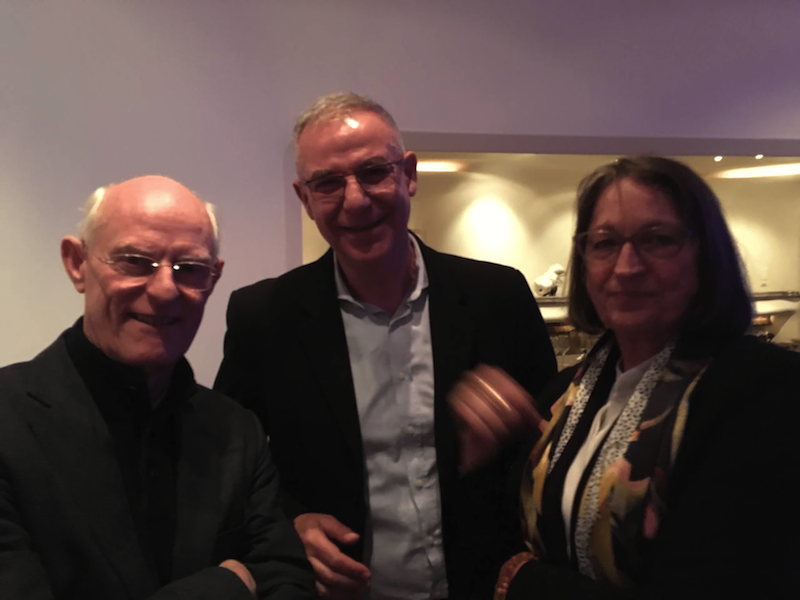
Demosthenes Davvetas is the author of books about Jean-Michel Basquiat, Cy Twombly, Mario Merz, Tony Cragg, and many other famous artists. A lecturer at Sorbonne University and a well-known poet, Demosthenes is also a graphic artist who combines exhibitions with performances. At the beginning of his career, Demosthenes met Joseph Beuys and he invited him to DAAD, where he met Beuys's circle and made friends with artists who soon became world stars. Marina Alvitr spoke with Demosthenes to find out his vision of art history and the current situation in culture.
MA: Hi, it's very nice to see you! Where are you now? In Greece? Paris?
DD: These technologies… you never know who is where. I am in Athens now, but the day after tomorrow I'm going to Rome for the opening of my exhibition, and then to Paris… Are you in Budapest?
MA: Yes, I came to visit the fair… It's very interesting for me to talk to you at this very moment when a lot is changing in art, and you know the artists well, who, in fact, laid the foundations of the existing system. How did it happen? Has this always been your dream?
DD: I met Joseph Beuys as a poet. I didn't know he was a famous artist and just started talking to him at the exhibition. I said that in my opinion, his work is connected with the concept of fluidity, and he invited me to have dinner. That's how our cooperation and friendship began. Beuys invited me to do an incredibly interesting art program in Germany. And then he made me promise that I would write about art and collaborate with artists to shape their ideas. And so I began to get acquainted with top artists: Warhol, Bacon, Baselitz, Kiefer, Tony Cragg, Boltansky, Julian Schnabel, Jean-Michel Basquiat, and others. I published interviews with them, but that was not the idea.

JOSEPH BEUYS: LA SAGESSE MODERN
MA: What did the artists see in you? Greek philosophy? Right words for ideas?
DD: Yes, but not only. I have never been and do not want to be an art critic. Today they come, tomorrow they disappear. What is important is a deep dialogue with the artist, a conversation. Art is an existential being, it always goes hand in hand with existence. Art is culture + life, but we often forget the second part. Conversations with Baselitz or Kiefer were an incredible experience. Kiefer always took me to the mountains, and all our dialogues took place there. Baselitz invited me to his castle, where the conversation took place by electric light. We just didn't know what time it was, morning or afternoon. Such conversations are more like a spiritual dance.
MA: I like that art is “culture + life”. Many artists are only interested in culture… Is there anything in common between the people you've met? Why did they become so famous?
DD: Yes, humanity. Joseph Beuys wanted to preserve humanity. Andy Warhol too, but through the prism of the American vision. Kiefer and Baselitz mixed humanity with the history of painting and gave it new meanings. The painting returned to art in the 80s thanks to them. Prior to this, conceptualism was the main thing, and this is the culture in its purest form. They brought back the body, the body of art, the body of the artist, the body of life after all.
Tony Cragg and Demosthenes Davvetas
MA: Yes, I agree that it was thanks to Kiefer and Baselitz in the 80s and later that the painting got a new life. As for Boyce, it's a completely different story. He said that any object can be art, and any person …


